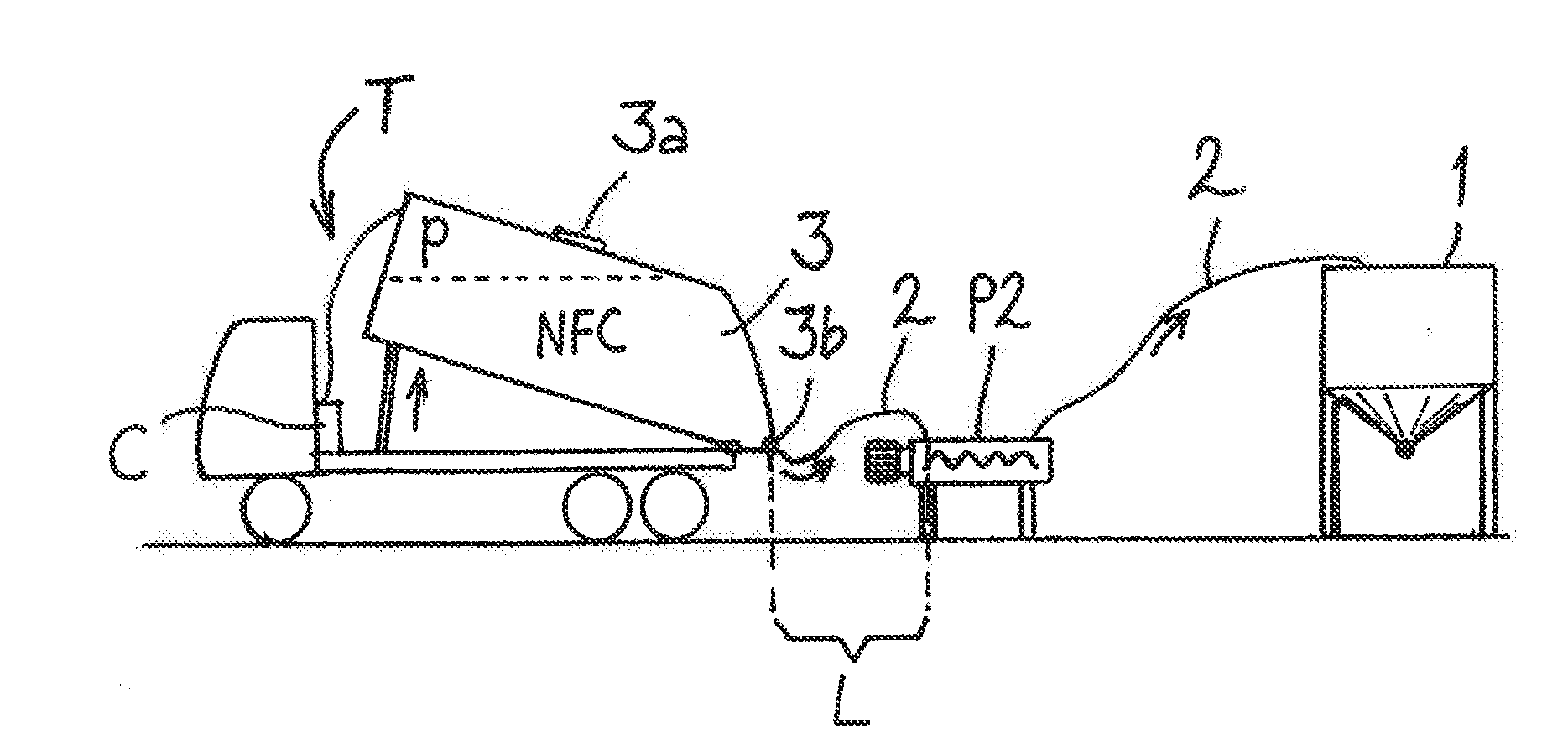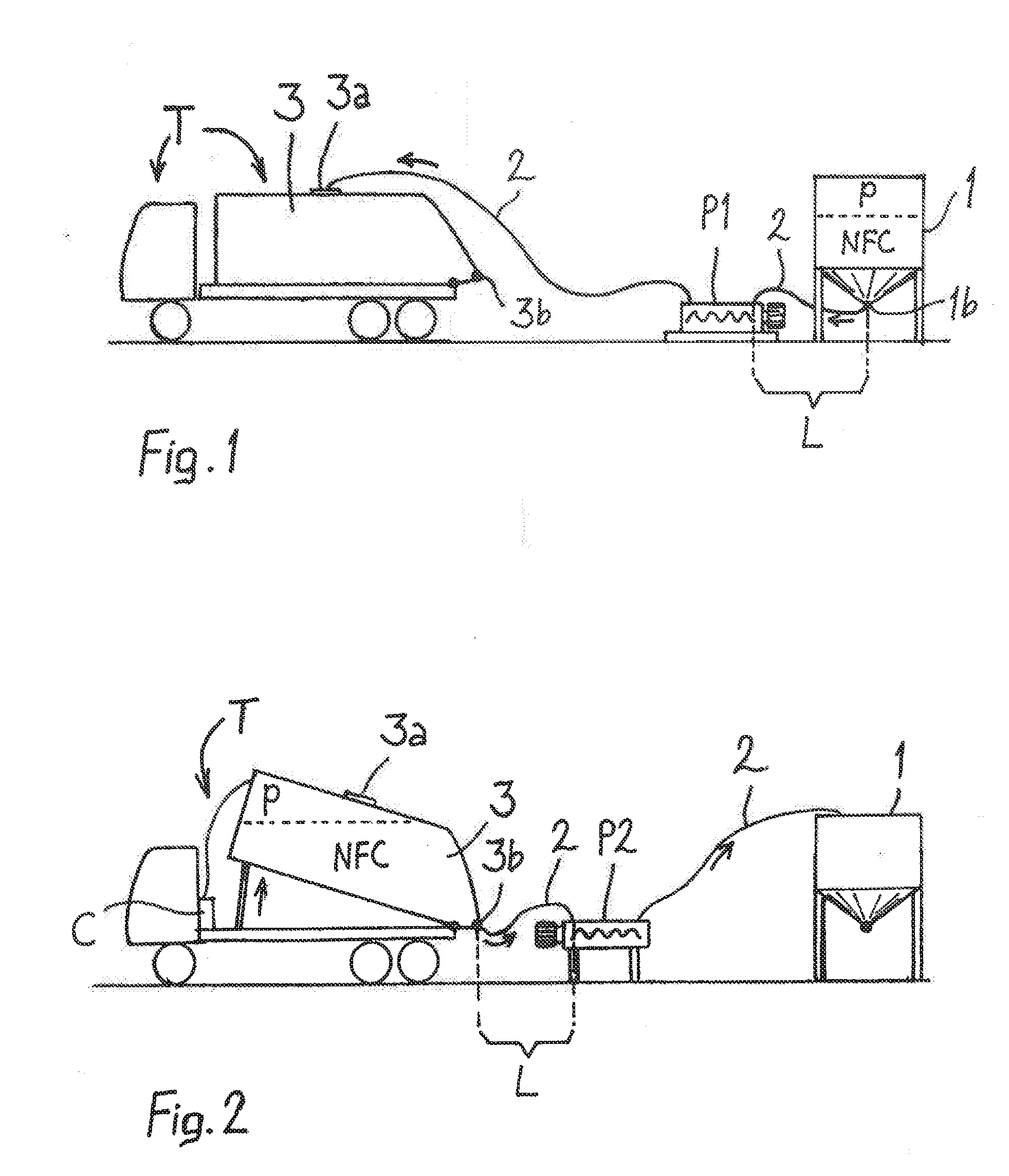Method and apparatus for transporting viscous material
- Summary
- Abstract
- Description
- Claims
- Application Information
AI Technical Summary
Benefits of technology
Problems solved by technology
Method used
Image
Examples
example
[0045]Catalytically (“TEMPO”) oxidized pulp was disintegrated to nanofibrillar cellulose and introduced to two conical bottom containers having each a capacity of 5 m3, the total volume of the nanofibrillar cellulose batch being 10 m3 and the concentration 2.4 wt-%. The viscosity of the batch was 21000 mPa·s at the concentration of 0.8 wt-% (Brookfield, 10 rpm).
[0046]The tank truck was a vehicle provided with a tippable container whose rear end was tapering to an apex where a discharge outlet valve was located. The maximum capacity of the container was was 60 m3.
[0047]The container was filled through the upper hatch from the two conical bottom containers using a Mono pump with 2 inch inner diameter (about 5 cm) connecting hose, length 20 m. The container was discharged by tipping the container, connecting a discharge hose of 4 inch inner diameter (about 10 cm) and 5 m length between the rear end discharge outlet and a Mono pump, opening the discharge outlet valve, starting the pump ...
PUM
| Property | Measurement | Unit |
|---|---|---|
| Length | aaaaa | aaaaa |
| Length | aaaaa | aaaaa |
| Length | aaaaa | aaaaa |
Abstract
Description
Claims
Application Information
 Login to View More
Login to View More - R&D
- Intellectual Property
- Life Sciences
- Materials
- Tech Scout
- Unparalleled Data Quality
- Higher Quality Content
- 60% Fewer Hallucinations
Browse by: Latest US Patents, China's latest patents, Technical Efficacy Thesaurus, Application Domain, Technology Topic, Popular Technical Reports.
© 2025 PatSnap. All rights reserved.Legal|Privacy policy|Modern Slavery Act Transparency Statement|Sitemap|About US| Contact US: help@patsnap.com



